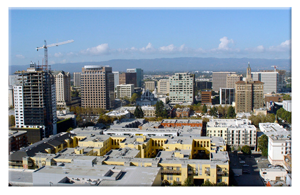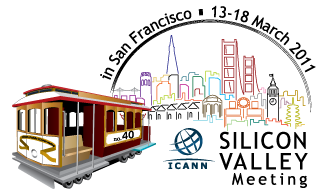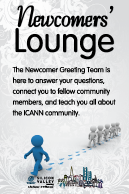| USA PT |
About Silicon Valley
Silicon Valley is in the southern part of the San Francisco Bay Area in Northern California in the United States. The region is home to many of the world's largest technology companies including Apple, Cisco, Google, HP, Intel and Oracle. The term originally referred to the region's large number of silicon chip innovators and manufacturers, but eventually came to refer to all the high-tech businesses in the area; it is now generally used as a metonym for the American high-tech sector. Despite the development of other high-tech economic centers throughout the United States and the world, Silicon Valley continues to be the leading hub for high-tech innovation and development, accounting for 1/3 of all of the venture capital investment in the United States.
Since the early twentieth century, Silicon Valley has been home to a vibrant, growing electronics industry. The industry began through experimentation and innovation in the fields of radio, television, and military electronics. Stanford University, its affiliates, and graduates have played a major role in the development of this area.

A powerful sense of regional solidarity accompanied the rise of Silicon Valley. From the 1890s, Stanford University's leaders saw its mission as service to the West and shaped the school accordingly. At the same time, the perceived exploitation of the West at the hands of eastern interests fueled booster-like attempts to build self-sufficient indigenous local industry. Thus, regionalism helped align Stanford's interests with those of the area's high-tech firms for the first fifty years of Silicon Valley's development.
During the 1940s and 1950s, Frederick Terman, as Stanford's dean of engineering and provost, encouraged faculty and graduates to start their own companies. He is credited with nurturing Hewlett-Packard, Varian Associates, and other high-tech firms, until what would become Silicon Valley grew up around the Stanford campus. Terman is often called "the father of Silicon Valley."
During 1955-85, solid state technology research and development at Stanford University followed three waves of industrial innovation made possible by support from private corporations, mainly Bell Telephone Laboratories, Shockley Semiconductor, Fairchild Semiconductor, and Xerox PARC. In 1969 the Stanford Research Institute operated one of the four original nodes that comprised ARPANET, predecessor to the Internet.
 Social roots of information technology revolution
Social roots of information technology revolution
It was in Silicon Valley that the silicon-based integrated circuit, the microprocessor, the microcomputer, among other key technologies, were developed, and has been the site of electronic innovation for over four decades, sustained by about a quarter of a million information technology workers. Silicon Valley was formed as a milieu of innovations by the convergence on one site of new technological knowledge; a large pool of skilled engineers and scientists from major universities in the area; generous funding from an assured market with the Defense Department; the development of an efficient network of venture capital firms; and, in the very early stage, the institutional leadership of Stanford University.
Roots in radio and military technology
The San Francisco Bay Area had long been a major site of U.S. Navy research and technology. In 1909, Charles Herrold started the first radio station in the United States with regularly scheduled programming in San Jose. Later that year, Stanford University graduate Cyril Elwell purchased the U.S. patents for Poulsen arc radio transmission technology and founded the Federal Telegraph Corporation (FTC) in Palo Alto. Over the next decade, the FTC created the world's first global radio communication system, and signed a contract with the U.S. Navy in 1912.
In 1933, Air Base Sunnyvale, California, was commissioned by the United States Government for use as a Naval Air Station (NAS) to house the airship USS Macon in Hangar One. The station was renamed NAS Moffett Field, and between 1933 and 1947, US Navy blimps were based here.[10] A number of technology firms had set up shop in the area around Moffett to serve the Navy. When the Navy gave up its airship ambitions and moved most of its West Coast operations to San Diego, NACA (the National Advisory Committee for Aeronautics, forerunner of NASA) took over portions of Moffett for aeronautics research. Many of the original companies stayed, while new ones moved in. The immediate area was soon filled with aerospace firms such as Lockheed.
Stanford Industrial Park
After World War II, universities were experiencing enormous demand due to returning students. To address the financial demands of Stanford's growth requirements, and to provide local employment opportunities for graduating students, Frederick Terman proposed the leasing of Stanford's lands for use as an office park, named the Stanford Industrial Park (later Stanford Research Park). Leases were limited to high technology companies. Its first tenant was Varian Associates, founded by Stanford alumni in the 1930s to build military radar components. However, Terman also found venture capital for civilian technology start-ups . One of the major success stories was Hewlett-Packard. Founded in Packard's garage by Stanford graduates William Hewlett and David Packard, Hewlett-Packard moved its offices into the Stanford Research Park slightly after 1953. In 1954, Stanford created the Honors Cooperative Program to allow full-time employees of the companies to pursue graduate degrees from the University on a part-time basis. The initial companies signed five-year agreements in which they would pay double the tuition for each student in order to cover the costs. Hewlett-Packard has become the largest personal computer manufacturer in the world, and transformed the home printing market when it released the first ink jet printer in 1984. In addition, the tenancy of Eastman Kodak and General Electric made Stanford Industrial Park a center of technology in the mid-1990s.
Silicon transistor
In 1953, William Shockley left Bell Labs in a disagreement over the handling of the invention of the transistor. After returning to California Institute of Technology for a short while, Shockley moved to Mountain View, California in 1956, and founded Shockley Semiconductor Laboratory. Unlike many other researchers who used germanium as the semiconductor material, Shockley believed that silicon was the better material for making transistors. Shockley intended to replace the current transistor with a new three-element design (today known as the Shockley diode), but the design was considerably more difficult to build than the "simple" transistor. In 1957, Shockley decided to end research on the silicon transistor. As a result, eight engineers left the company to form Fairchild Semiconductor. Two of the original employees of Fairchild Semiconductor, Robert Noyce and Gordon Moore, would go on to found Intel.[13]
Venture capital firms
By the early 1970s there were many semiconductor companies in the area, computer firms using their devices, and programming and service companies serving both. Industrial space was plentiful and housing was still inexpensive. The growth was fueled by the emergence of the venture capital industry on Sand Hill Road, beginning with Kleiner Perkins in 1972; the availability of venture capital exploded after the successful $1.3 billion IPO of Apple Computer in December 1980.
Law firms
The rise of Silicon Valley was also bolstered by the development of appropriate legal infrastructure to support the rapid formation, funding, and expansion of high-tech companies, as well as the development of a critical mass of litigators and judges experienced in resolving disputes between such firms. From the early 1980s onward, many national (and later international) law firms opened offices in San Francisco and Palo Alto in order to provide Silicon Valley startups with legal services. Furthermore, California law has a number of quirks which help entrepreneurs establish startups at the expense of established firms, such as a nearly absolute ban on non-compete clauses in employment agreements.
The rise of software
Although semiconductors are still a major component of the area's economy, Silicon Valley has been most famous in recent years for innovations in software and Internet services. Silicon Valley has significantly influenced computer operating systems, software, and user interfaces.
Using money from NASA and the U.S. Air Force, Doug Engelbart invented the mouse and hypertext-based collaboration tools in the mid-1960s, while at Stanford Research Institute (now SRI International). When Engelbart's Augmentation Research Center declined in influence due to personal conflicts and the loss of government funding, Xerox hired some of Engelbart's best researchers. In turn, in the 1970s and 1980s, Xerox's Palo Alto Research Center (PARC) played a pivotal role in object-oriented programming, graphical user interfaces (GUIs), Ethernet, PostScript, and laser printers.
While Xerox marketed equipment using its technologies, for the most part its technologies flourished elsewhere. The diaspora of Xerox inventions led directly to 3Com and Adobe Systems, and indirectly to Cisco, Apple Computer and Microsoft. Apple's Macintosh GUI was largely a result of Steve Jobs' visit to PARC and the subsequent hiring of key personnel. Cisco's impetus stemmed from the need to route a variety of protocols over Stanford's campus Ethernet.
Text is available under the Creative Commons Attribution/Share-Alike License











